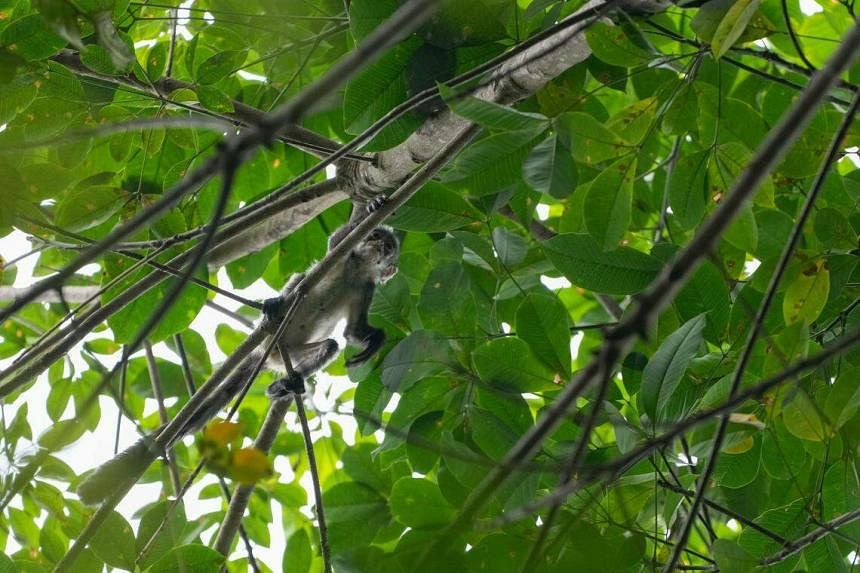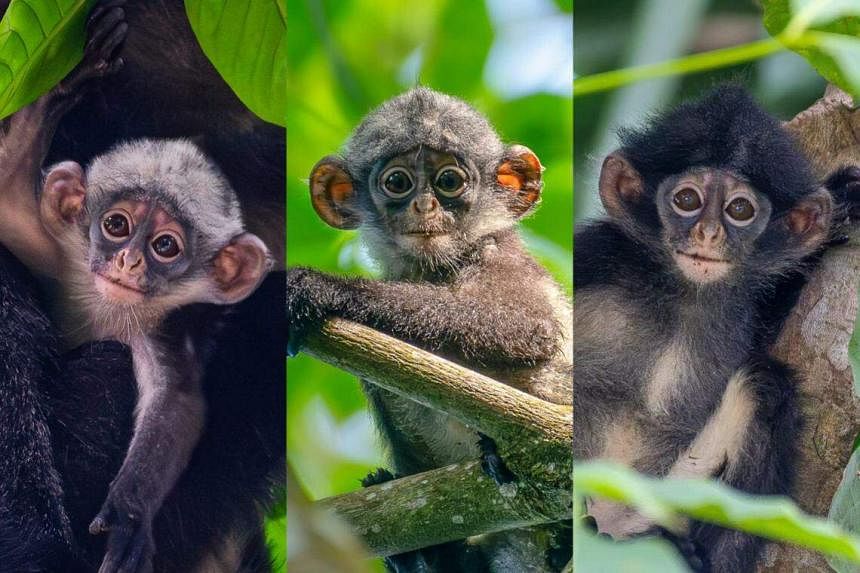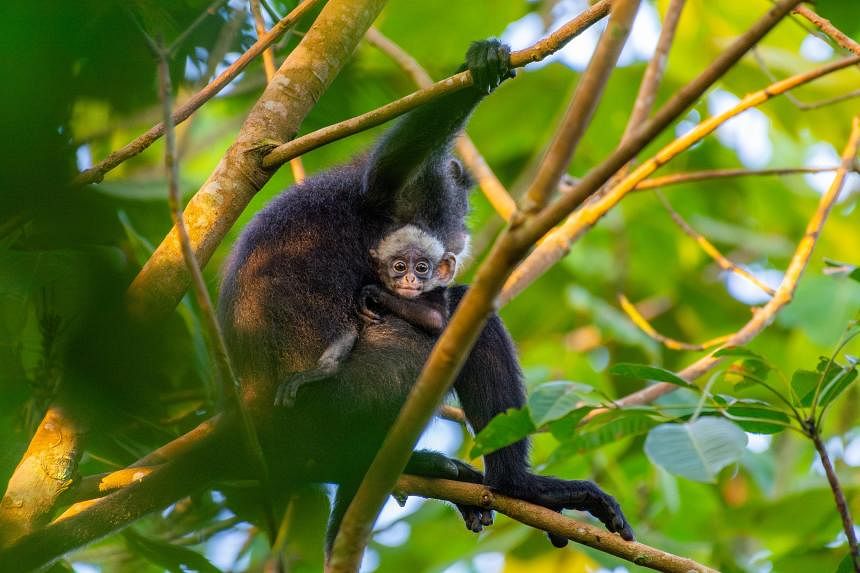SINGAPORE – Singapore’s population of critically endangered Raffles’ banded langurs has welcomed a new member with the birth of a male infant – the first baby of the species sighted here in the wild in 2024.
The baby was first seen on Feb 24 in the Central Catchment Nature Reserve by several wildlife photographers, a few months after its mother was spotted pregnant.
One photographer, Mr Jeffery Teo, 53, who works in the finance industry, said: “I chanced upon a pregnant female in the family two to three months before seeing the baby. Since sighting the female, I made an effort to try spotting the family whenever I went for my regular walks in the area.
“Usually, the mum and baby will be with a large group of family members and often high up in the trees. We try to stay as quiet as possible, so that the langurs will be relaxed in our presence and hang around longer.”
Another photographer, Mr Law Jia Bao, said that he had photographed the baby on Feb 25 and managed to catch another glimpse of it in March.
“We were expecting to see the baby not long after hearing that Jeffery had spotted the pregnant mother,” he said.
Sporting the all-white fur characteristic of the species’ young, the infant most likely was born between late December and early January, according to primatologist Andie Ang, who added that the birth takes the population here to 76 individuals.

The Raffles’ banded langur is endemic to Singapore and the south of Peninsular Malaysia.
Dr Ang said: “Newly born infants take roughly eight to 10 months to take on the adults’ fur colouration, indicated by the species’ distinctive white fur on the inside of the legs and in the area around the tummy.
She added that the monkeys have a gestational period of six months and become juveniles in 1½ years. At that point, they move independently but might not be sexually mature.
Dr Ang helms the Raffles’ Banded Langur Working Group, which drives conservation efforts for the elusive animal, which is one of the most threatened primates in the world.
The group is managed and funded by Mandai Nature, with members from the National Parks Board, Singapore universities, nature groups, agencies from Malaysia and the Jane Goodall Institute (Singapore).

On April 25, NParks said that camera traps installed on the Eco-Link@BKE had recorded the first sighting of a langur using the link bridge in October 2023, a sign that the monkey could be venturing into other forested areas to find food and mates.
This, the agency said, represented an encouraging sign for the species as it meant that the link bridge was being used to expand its habitat and increase its chances of survival.
The monkey had been close to extinction, with fewer than 14 counted in the wild in the 1990s, but recovered to around 40 individuals in 2010 and 68 in 2021.
Around six new langur babies have been recorded each year for 2022 and 2023, Dr Ang said.
A study co-authored by Dr Ang and published in 2023 showed that the langurs’ population was predicted to double within the next 15 years and expected to exceed 240 individuals by 2071.
Dr Ang had said then: “The results presented in our paper show that with the right protection and management measures in place, we can bring a species back from the brink of extinction.”


